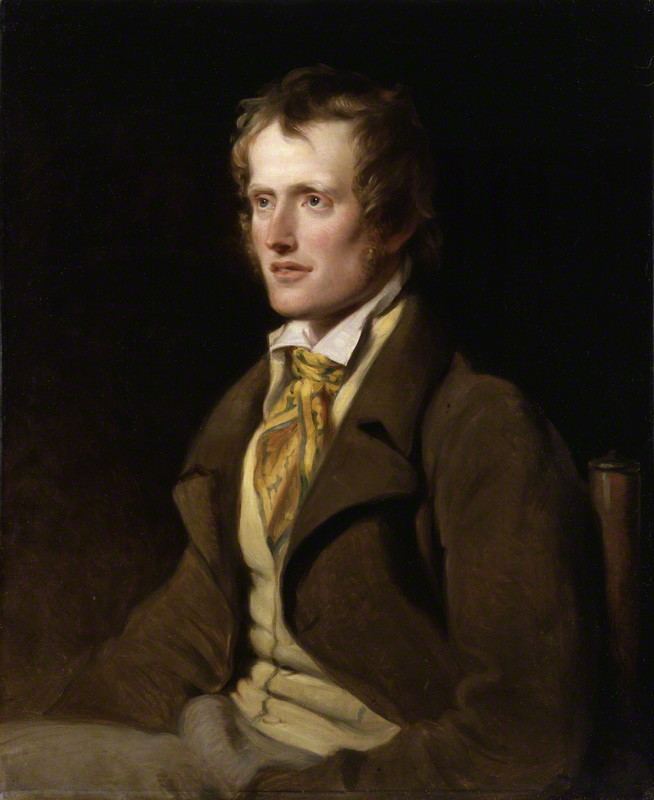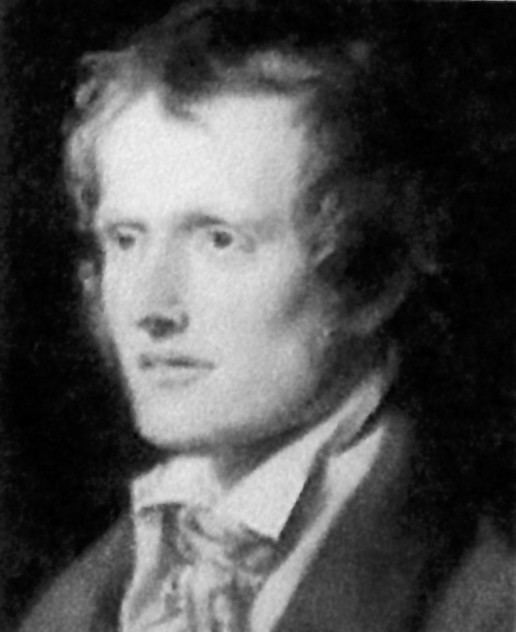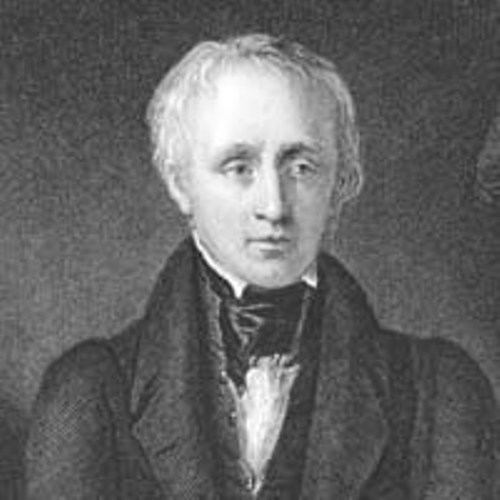Genre Rural Signature | Name John Clare Role Poet | |
 | ||
Notable works Poems Descriptive of Rural Life and Scenery Died May 20, 1864, St Andrew's Healthcare, Northampton, United Kingdom Parents Parker Clare, Ann Stimson Clare Books The Shepherd's Calendar, Poems by John Clare, The Poems of John Clare, Poems Chiefly From Ma, "I Am": The Selected Poetry of Similar People William Shakespeare, George Gordon Byron, Edward Thomas, William Hilton, Ronald Blythe | ||
Selected poems of john clare audiobook part 1 2
John Clare (13 July 1793 – 20 May 1864) was an English poet, the son of a farm labourer, who became known for his celebrations of the English countryside and sorrows at its disruption. His poetry underwent major re-evaluation in the late 20th century: he is now often seen as one of the major 19th-century poets. His biographer Jonathan Bate states that Clare was "the greatest labouring-class poet that England has ever produced. No one has ever written more powerfully of nature, of a rural childhood, and of the alienated and unstable self."
Contents
- Selected poems of john clare audiobook part 1 2
- Richard burton reads john clare s poem autumn
- Early life
- Early poems
- Midlife
- Later life and death
- Poetry
- Essays
- Revived interest
- John Clare Cottage
- Poetry collections
- Works about Clare
- References
Richard burton reads john clare s poem autumn
Early life

Clare was born in Helpston, six miles to the north of the city of Peterborough. In his lifetime, the village was in the Soke of Peterborough in Northamptonshire and his memorial calls him "The Northamptonshire Peasant Poet". Helpston now lies in the Peterborough unitary authority of Cambridgeshire.

He became an agricultural labourer while still a child; however, he attended school in Glinton church until he was 12. In his early adult years, Clare became a potboy in the Blue Bell public house and fell in love with Mary Joyce; but her father, a prosperous farmer, forbade her to meet him. Subsequently, he was a gardener at Burghley House. He enlisted in the militia, tried camp life with Gypsies, and worked in Pickworth as a lime burner in 1817. In the following year he was obliged to accept parish relief. Malnutrition stemming from childhood may be the main culprit behind his 5-foot stature and may have contributed to his poor physical health in later life.
Early poems

Clare had bought a copy of James Thomson's The Seasons and began to write poems and sonnets. In an attempt to hold off his parents' eviction from their home, Clare offered his poems to a local bookseller named Edward Drury. Drury sent Clare's poetry to his cousin John Taylor of the publishing firm of Taylor & Hessey, who had published the work of John Keats. Taylor published Clare's Poems Descriptive of Rural Life and Scenery in 1820. This book was highly praised, and in the next year his Village Minstrel and other Poems was published.'There was no limit to the applause bestowed upon Clare, unanimous in their admiration of a poetical genius coming before them in the humble garb of a farm labourer'
Midlife
He had married Martha ("Patty") Turner in 1820. An annuity of 15 guineas from the Marquess of Exeter, in whose service he had been, was supplemented by subscription, so that Clare became possessed of £45 annually, a sum far beyond what he had ever earned. Soon, however, his income became insufficient, and in 1823 he was nearly penniless. The Shepherd's Calendar (1827) met with little success, which was not increased by his hawking it himself. As he worked again in the fields his health temporarily improved; but he soon became seriously ill. Earl FitzWilliam presented him with a new cottage and a piece of ground, but Clare could not settle in his new home.
Clare was constantly torn between the two worlds of literary London and his often illiterate neighbours; between the need to write poetry and the need for money to feed and clothe his children. His health began to suffer, and he had bouts of severe depression, which became worse after his sixth child was born in 1830 and as his poetry sold less well. In 1832, his friends and his London patrons clubbed together to move the family to a larger cottage with a smallholding in the village of Northborough, not far from Helpston. However, he felt only more alienated.
His last work, the Rural Muse (1835), was noticed favourably by Christopher North and other reviewers, but this was not enough to support his wife and seven children. Clare's mental health began to worsen. As his alcohol consumption steadily increased along with his dissatisfaction with his own identity, Clare's behaviour became more erratic. A notable instance of this behaviour was demonstrated in his interruption of a performance of The Merchant of Venice, in which Clare verbally assaulted Shylock. He was becoming a burden to Patty and his family, and in July 1837, on the recommendation of his publishing friend, John Taylor, Clare went of his own volition (accompanied by a friend of Taylor's) to Dr Matthew Allen's private asylum High Beach near Loughton, in Epping Forest. Taylor had assured Clare that he would receive the best medical care.
Clare was reported as being "full of many strange delusions". He believed himself to be a prize fighter and that he had two wives, Patty and Mary. He started to claim he was Lord Byron. Allen wrote about Clare to The Times in 1840:
It is most singular that ever since he came… the moment he gets pen or pencil in hand he begins to write most poetical effusions. Yet he has never been able to obtain in conversation, nor even in writing prose, the appearance of sanity for two minutes or two lines together, and yet there is no indication of insanity in any of his poetry.
Later life and death
During his first few asylum years in High Beach, Essex (1837–41), Clare re-wrote famous poems and sonnets by Lord Byron. His own version of Child Harold became a lament for past lost love, and Don Juan, A Poem became an acerbic, misogynistic, sexualised rant redolent of an ageing Regency dandy. Clare also took credit for Shakespeare's plays, claiming to be the Renaissance genius himself. "I'm John Clare now," the poet claimed to a newspaper editor, "I was Byron and Shakespeare formerly."
In 1841, Clare absconded from the asylum in Essex, to walk some 90 miles (140 km) home, believing that he was to meet his first love Mary Joyce; Clare was convinced that he was married to her and Martha as well, with children by both women. He did not believe her family when they told him she had died accidentally three years earlier in a house fire. He remained free, mostly at home in Northborough, for the five months following, but eventually Patty called the doctors in. Between Christmas and New Year in 1841, Clare was committed to the Northampton General Lunatic Asylum (now St Andrew's Hospital). Upon Clare's arrival at the asylum, the accompanying doctor, Fenwick Skrimshire, who had treated Clare since 1820, completed the admission papers. To the enquiry "Was the insanity preceded by any severe or long-continued mental emotion or exertion?", Dr Skrimshire entered: "After years of poetical prosing." He remained here for the rest of his life under the humane regime of Dr Thomas Octavius Prichard, who encouraged and helped him to write. Here he wrote possibly his most famous poem, I Am.
He died on 20 May 1864, in his 71st year. His remains were returned to Helpston for burial in St Botolph’s churchyard. Today, children at the John Clare School, Helpston's primary, parade through the village and place their "midsummer cushions" around Clare's gravestone (which bears the inscriptions "To the Memory of John Clare The Northamptonshire Peasant Poet" and "A Poet is Born not Made") on his birthday, in honour of their most famous resident.
Poetry
In his time, Clare was commonly known as "the Northamptonshire Peasant Poet". His formal education was brief, his other employment and class-origins were lowly. Clare resisted the use of the increasingly standardised English grammar and orthography in his poetry and prose, alluding to political reasoning in comparing "grammar" (in a wider sense of orthography) to tyrannical government and slavery, personifying it in jocular fashion as a "bitch". He wrote in his Northamptonshire dialect, introducing local words to the literary canon such as "pooty" (snail), "lady-cow" (ladybird), "crizzle" (to crisp) and "throstle" (song thrush).
In his early life he struggled to find a place for his poetry in the changing literary fashions of the day. He also felt that he did not belong with other peasants. Clare once wrote:
"I live here among the ignorant like a lost man in fact like one whom the rest seemes careless of having anything to do with—they hardly dare talk in my company for fear I should mention them in my writings and I find more pleasure in wandering the fields than in musing among my silent neighbours who are insensible to everything but toiling and talking of it and that to no purpose."
It is common to see an absence of punctuation in many of Clare's original writings, although many publishers felt the need to remedy this practice in the majority of his work. Clare argued with his editors about how it should be presented to the public.
Clare grew up during a period of massive changes in both town and countryside as the Industrial Revolution swept Europe. Many former agricultural and craft workers, including children, moved away from the countryside to crowded cities, as factory work became mechanized. The Agricultural Revolution saw pastures ploughed up, trees and hedges uprooted, fens drained and common land enclosed. This destruction of a way of life centuries old distressed Clare deeply. His political and social views were predominantly conservative. ("I am as far as my politics reaches 'King and Country' – no Innovations in Religion and Government say I.") He refused even to complain about the subordinate position to which English society had relegated him, swearing that "with the old dish that was served to my forefathers I am content."
His early work expresses delight in both nature and the cycle of the rural year. Poems such as "Winter Evening", "Haymaking" and "Wood Pictures in Summer" celebrate the beauty of the world and the certainties of rural life, where animals must be fed and crops harvested. Poems such as "Little Trotty Wagtail" show his sharp observation of wildlife, though "The Badger" shows his lack of sentiment about the place of animals in the countryside. At this time, he often used poetic forms such as the sonnet and the rhyming couplet. His later poetry tends to be more meditative and uses forms similar to the folk songs and ballads of his youth. An example of this is "Evening".
Clare's knowledge of the natural world went far beyond that of the major Romantic poets. However, poems such as "I Am" show a metaphysical depth on a par with his contemporary poets and many of his pre-asylum poems deal with intricate play on the nature of linguistics. His "bird's nest poems", it can be argued, illustrate the self-awareness, and obsession with the creative process that captivated the romantics. Clare was the most influential poet, aside from Wordsworth, to practice in an older style.
Essays
The only Clare essay published (anonymously), in his lifetime was "Popularity of Authorship", a document of his predicament in 1824. Other essays written by Clare appeared in Essays on Landscape, Essays on Criticism and Fashion, Recollections on a Journey from Essex, Excursions with an Angler, For Essay on Modesty and Mock Morals, For Essay on Industry:"Keats", "Byron", "The Dream", "House or Window Flies" and "Dewdrops".
Revived interest
Clare was relatively forgotten during the later 19th century, but interest in his work was revived by Arthur Symons in 1908, Edmund Blunden in 1920 and John and Anne Tibble in their ground-breaking 1935 two-volume edition, while in 1949 Geoffrey Grigson edited Poems of John Clare's Madness (published by Routledge and Kegan Paul). Benjamin Britten set some of "May" from A Shepherd's Calendar in his Spring Symphony of 1948, and included a setting of The Evening Primrose in his Five Flower Songs.
Copyright to much of his work has been claimed since 1965 by the editor of the Complete Poetry, Professor Eric Robinson, although these claims were contested. Recent publishers have refused to acknowledge the claim (especially in recent editions from Faber and Carcanet) and it seems the copyright is now defunct.
The largest collection of original Clare manuscripts is housed at Peterborough Museum and Art Gallery, where items are available to view by appointment.
Altering what Clare actually wrote continued into the later 20th century; for instance, Helen Gardner amended not only the punctuation but also the spelling and grammar in the New Oxford Book of English Verse 1250–1950 (1972), which she edited.
Since 1993, the John Clare Society of North America has organised an annual session of scholarly papers concerning John Clare at the annual Convention of the Modern Language Association of America.
In 2003 the scholar Jonathan Bate published the first major critical biography of the poet. This has helped to maintain the revival in popular and academic interest in the poet.
John Clare Cottage
The thatched cottage where Clare was born was bought by the John Clare Trust in 2005. In May 2007 the Trust gained £1.27 million of funding from the Heritage Lottery Fund and commissioned Jefferson Sheard Architects to create a new landscape design and Visitor Centre, including a cafe, shop and exhibition space. The Cottage at 12 Woodgate, Helpston, has been restored using traditional building methods and is open to the public.
In 2013 the John Clare Trust received a further grant from the Heritage Lottery Fund to help preserve the building and provide educational activities for youngsters visiting the cottage.
Poetry collections
In chronological order:
Works about Clare
In chronological order:
